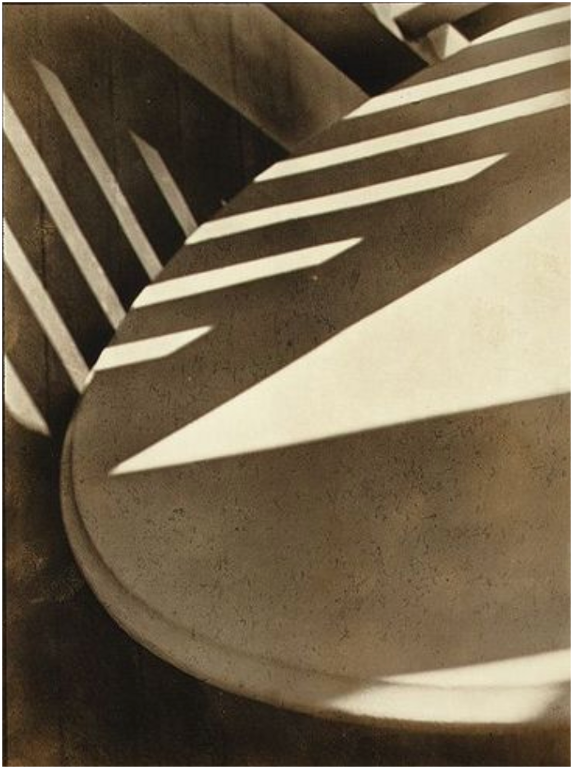
In this picture by Paul Strand, I think Strand may have been interested in the lines and shapes created by the shadow, which contrasts with the white surface of the knocked-over table and adds interest by creating variation with the repetition of the shadowy form. I think that he could have also been interested in the chair’s texture since when not lightened it seems to depict a rougher or coarse surface which adds interest and further contrasts between the light and dark. Lastly, I believe Strand could have been interested in capturing the tone of the table with the enlightened white surface portions and the portions covered by shadow, perhaps with the intention of contrast.
If I were the photographer, I might give this photo the title of “Fallen Lines” since the picture seemingly depicts a fallen table on its side and the various lines created by the shadows and the chair itself are prominently seen throughout the image.
I think something unusual about this picture is the lack of context that this image has since the object is portrayed in the picture. However, what seems to be a table, could very well be another item of furniture, such as a chair or otherwise, making it unclear what the purpose of this image is. This is complemented by the fact the title of the image does not provide any additional context beyond the location and the fact that this is an abstract photo, which does not add much context to the object within the image. I think that the lack of context actually contributes to the meaning of the picture since it makes it so that a viewer may develop unique interpretations or thoughts of the photograph, which could be the intent of this image as a piece of abstraction.
In this image, lines are used throughout the image that are created with the combination of the object in the picture and angled lighting so that shadows will create lines at an angle different from the edges of the chair and the shadows on the floor. Having so many lines at different angles adds complexity to the image, which could inspire interest or fascination by seemingly perceiving the dynamical movement of the shadow.
Shapes, in relation to lines, are used varyingly. The lines at unique angles create polygons that seem to be geometrically irregular with sharp angles yet have an essence of parallelism with surrounding shapes and lines. Thus, this seems to seemingly create a form of disorganization, perhaps even chaos, within uniformity and order. The combination of these two seemingly contrasting elements adds emphasis to the differences made within this image.
Quite obviously, pattern is used in this image through the repeating patterns of lines and shapes to create a sense of conformity within the unorganized image. I think this could be related to the contrast between the abstraction within the image with the formalism of photography at the time, seemingly implicating how abstraction, which is entirely inclusive of disorder, can be inclusive of organization, even if it may conflict.
The use of textures is seen in the difference of the shadows on the chair, in which finer details of roughness is brought out, comparing to the lightened portions of the chair and the (I’m assuming) wood floor. I think these textures help distinguish between three elements in the picture, namely the floor, the shadow and the light, contrasting these three parts apart.
This image’s tone is monochromatic, with various shades of darker and lighter colors used. Although the most prominent colors are probably gray/black and white, there are clearly different shades in different parts of the picture. In line with the patterns of the lines and shapes, I think this helps to add contrast between the elements mentioned in the above paragraph.
The picture is taken in a seemingly shallow depth of field. The object (chair/table/?) taking up most of the image is portrayed quite sharply, whereas the floor seems out of focus. This could perhaps be an effort to emphasize the chair and the shadows shown there?
I think what is best about this picture is the fascinating depiction of abstraction using a seemingly simple household object positioned in such a manner that it isn’t apparent what the object even is. The use of light in this picture seems to add many interesting elements that are subject to interpretation and analysis, which could create such interesting effects when combined with something so simple that this could perhaps be recreated similarly simply by utilizing furniture and sunlight. I think this photograph is a masterful use of various elements of photography in which simple circumstances could result in such expert employment of techniques.
